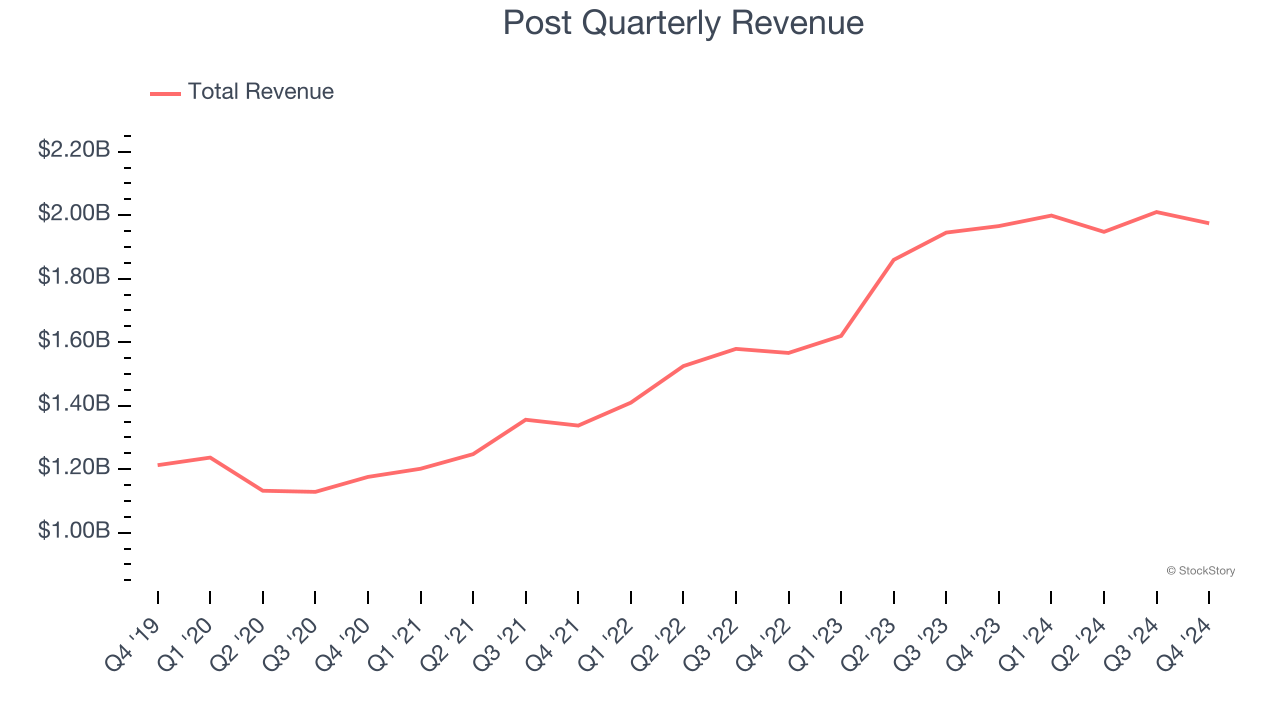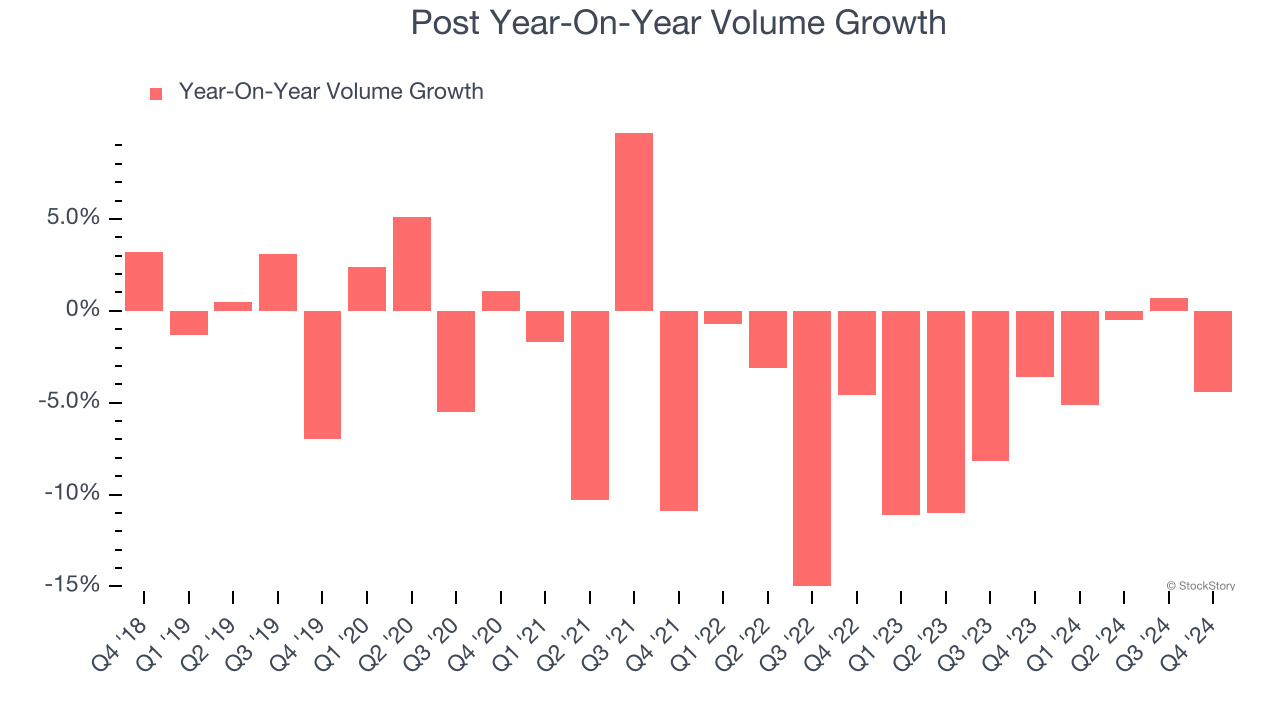
Packaged foods company Post (NYSE:POST) met Wall Street’s revenue expectations in Q4 CY2024, but sales were flat year on year at $1.97 billion. Its non-GAAP profit of $1.73 per share was 14.4% above analysts’ consensus estimates.
Is now the time to buy Post? Find out by accessing our full research report, it’s free.
Post (POST) Q4 CY2024 Highlights:
- Revenue: $1.97 billion vs analyst estimates of $1.98 billion (flat year on year, in line)
- Adjusted EPS: $1.73 vs analyst estimates of $1.51 (14.4% beat)
- Adjusted EBITDA: $369.9 million vs analyst estimates of $358.7 million (18.7% margin, 3.1% beat)
- EBITDA guidance for the full year is $1.44 billion at the midpoint, in line with analyst expectations
- Operating Margin: 10.8%, in line with the same quarter last year
- Free Cash Flow Margin: 8.7%, up from 4.8% in the same quarter last year
- Sales Volumes fell 4.4% year on year, in line with the same quarter last year
- Market Capitalization: $6.10 billion
Company Overview
Founded in 1895, Post (NYSE:POST) is a packaged food company known for its namesake breakfast cereal and healthier-for-you snacks.
Shelf-Stable Food
As America industrialized and moved away from an agricultural economy, people faced more demands on their time. Packaged foods emerged as a solution offering convenience to the evolving American family, whether it be canned goods or snacks. Today, Americans seek brands that are high in quality, reliable, and reasonably priced. Furthermore, there's a growing emphasis on health-conscious and sustainable food options. Packaged food stocks are considered resilient investments. People always need to eat, so these companies can enjoy consistent demand as long as they stay on top of changing consumer preferences. The industry spans from multinational corporations to smaller specialized firms and is subject to food safety and labeling regulations.
Sales Growth
A company’s long-term performance is an indicator of its overall quality. While any business can experience short-term success, top-performing ones enjoy sustained growth for years.
With $7.93 billion in revenue over the past 12 months, Post is one of the larger consumer staples companies and benefits from a well-known brand that influences consumer purchasing decisions.
As you can see below, Post’s sales grew at a solid 15.5% compounded annual growth rate over the last three years despite consumers buying less of its products. We’ll explore what this means in the "Volume Growth" section.

This quarter, Post’s $1.97 billion of revenue was flat year on year and in line with Wall Street’s estimates.
Looking ahead, sell-side analysts expect revenue to grow 1.3% over the next 12 months, a deceleration versus the last three years. This projection is underwhelming and indicates its products will see some demand headwinds.
Unless you’ve been living under a rock, it should be obvious by now that generative AI is going to have a huge impact on how large corporations do business. While Nvidia and AMD are trading close to all-time highs, we prefer a lesser-known (but still profitable) stock benefiting from the rise of AI. Click here to access our free report one of our favorites growth stories.
Volume Growth
Revenue growth can be broken down into changes in price and volume (the number of units sold). While both are important, volume is the lifeblood of a successful staples business as there’s a ceiling to what consumers will pay for everyday goods; they can always trade down to non-branded products if the branded versions are too expensive.
Post’s average quarterly sales volumes have shrunk by 5.4% over the last two years. This decrease isn’t ideal because the quantity demanded for consumer staples products is typically stable. 
In Post’s Q4 2025, sales volumes dropped 4.4% year on year. This result represents a further deceleration from its historical levels, showing the business is struggling to move its products.
Key Takeaways from Post’s Q4 Results
Despite in line revenue, it was encouraging to see Post beat analysts’ EBITDA and EPS expectations this quarter. Looking ahead, EBITDA guidance was in line with expectations. Overall, this quarter had some key positives. The stock remained flat at $105.86 immediately following the results.
Is Post an attractive investment opportunity right now? The latest quarter does matter, but not nearly as much as longer-term fundamentals and valuation, when deciding if the stock is a buy. We cover that in our actionable full research report which you can read here, it’s free.
